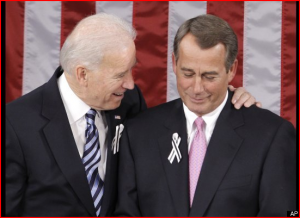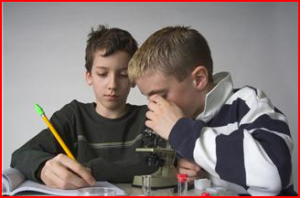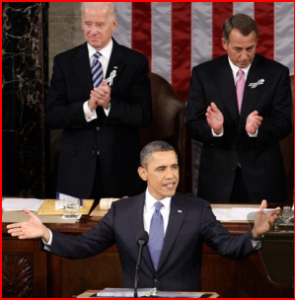Topical Categories
Archives
The Contenders for “Innovator-in-Chief”: Obama v Romney
Will it be President Obama or former Massachusetts Governor Mitt Romney who will offer the best strategy and leadership for helping the U.S. to increase the innovation needed to rebuild its economy? For those who fully comprehend the direct link between America's economic survival and the role of innovation, this is a question of monumental significance.
To attempt to provide some answers to this question, the Washington, DC-based Information Technology and Innovation Foundation (ITIF) recently released a 33-page report. The report provides a comparison of the two men’s approaches in ten policy areas. The ITIF based their analysis on a variety of the candidates' documents and policy statements gathered from a ten-year period.
According to the ITIF, “the United States is engaged in a fierce race for innovation-based economic growth” that will require the future President to place science, technology, innovation and entrepreneurship at the center of economic policymaking. The ITIF describes itself as "a nonpartisan think-tank" that does not take a position on which candidate will likely do a better job with innovation.
However, the report did conclude that neither candidate nor political party is correct on every issue and, therefore, encouraged the creation of a “bipartisan Washington Innovation Consensus." It states that a partisan approach to creating technology policy will only hamper the nation. “Each side has to bend if we are to restore U.S. economic greatness.”
An article in the Business Journals provides a helpful side-by-side summary of that report:
FEDERAL RESEARCH & DEVELOPMENT FUNDING:
- In 2008, Obama pledged to double federal funding for basic research, focusing on physical and life sciences, over the next ten years. He’s falling short of that goal, even though he did increase funding for the National Science Foundation.
- Romney has called for an immediate 5% cut in non-security discretionary spending. Non-defense R&D programs presumably would be subject to this cut — Romney hasn’t said they’d be exempt.
TAXES:
On corporate taxes:
Both Obama and Romney favor revenue-neutral corporate tax reform that would lower the tax rate while eliminating many business tax breaks. They both also favor making the research and development tax credit permanent.
- Obama, however, wants to collect more U.S. taxes from multinational corporations.
- Romney wants to move to a territorial tax system, where income is taxed where it is earned with no
 additional U.S. taxes if companies move this money back [to America] from foreign countries.
additional U.S. taxes if companies move this money back [to America] from foreign countries.
On individual income taxes:
- Obama would raise the tax rate for households making more than $250,000.
- Romney proposes a 20% across-the-board cut in tax rates, accompanied by the elimination of many tax deductions.
- Obama also has proposed raising the capital gains tax rate from 15% to 20%.
- Romney would maintain the 15% rate.
BROADBAND/INTERNET POLICY:
Both candidates propose making more spectrum available for commercial use, and both oppose efforts by the International Telecommunications Union to take over the pricing on Internet interconnections and technical standards.
Their biggest difference is on net neutrality — whether the government should prohibit Internet service providers from favoring some web sites over others.
- Obama favors net neutrality regulations, while exempting wireless networks from most of them.
- Romney opposes net neutrality rules, instead relying on market forces to ensure an open Internet.
- Obama also would rely more on regulations to address issues such as online privacy and cybersecurity. The president also favors a more robust government role in expanding broadband access.
- Romney would leave broadband demand creation to local governments and the private sector.
ENERGY INNOVATION:
This is one of the biggest areas of disagreement between the two candidates:
- Obama is promoting a national energy strategy to transition from fossil fuels to renewable energy sources. That includes government investments in energy innovation, including deployment as well as basic science.
 Romney wants to achieve North American energy independence primarily by significantly expanding domestic oil and natural gas production. He would limit government investment in energy innovation to basic research and demonstration projects of new energy technologies.
Romney wants to achieve North American energy independence primarily by significantly expanding domestic oil and natural gas production. He would limit government investment in energy innovation to basic research and demonstration projects of new energy technologies.
- Obama wants to continue tax breaks for renewable energy while eliminating subsidies for oil, natural gas and coal production.
- Romney wants to scale down or eliminate subsidies, grants and tax incentives for clean energy commercialization and deployment.
MANUFACTURING POLICY:
- Obama has proposed investing $1 billion to create a National Network for Manufacturing Innovation and $2.2 billion in advanced manufacturing R&D.
- Romney is silent on these issues.
IMMIGRATION:
- Obama has called for “fixing the immigration system for America’s 21st century economy,” but he hasn’t offered many specifics yet.
- Romney has proposed raising the limit on visas for holders of advanced degrees in technological fields and giving green cards to foreigners who graduate from U.S. universities in these fields.
TRADE:
Both Obama and Romney support completing the Trans-Pacific Partnership trade agreement, and working to expand exports.
- Obama, however, places more of an emphasis on putting environmental and labor provisions in trade agreements.
- Romney also has promised to be tougher on China when it violates trade agreements, particularly when it comes to currency manipulation.
Some Conclusions:
According to ITIF:
- The Obama-Biden platform is more willing to have government serve as an active partner with industry, such as in helping fund early-stage technology. They propose keeping the private sector as the main source of innovation while creating government collaborations and intervening in the event of market failures.
- "Romney would take a lighter touch role for government and have the private sector take the lead" in many areas.
Obama emphasizes the need to improve the nation's digital infrastructure and worker skills.
- The Obama-Biden platform also supports the creation of stronger rules governing the Internet and telecommunications, and fostering the growth of the alternative energy industry.
- The Romney-Ryan conservative platform also favors eliminating any government policy that steers investment in any particular direction, such as government policy that would assist the alternative energy industry.
A Huffington Post article concludes:
"…the vast majority of the literature that the 2012 Obama-Biden campaign has made available on its science, technology, and innovation policies points to the Administration's past achievements …In general, more specificity is needed regarding the Obama Administration's science, technology, and innovation goals should it win a second term."
The report does give the Administration credit, however, for coming up with a detailed plan for reinvigorating high-tech manufacturing.
The Romney campaign is taken to task for issuing plans that "only addresses energy innovation and not the broader role of federal R&D investment in stimulating innovation in other areas, including life sciences, nanotechnology, or advanced manufacturing."
http://www.govtech.com/policy-management/Obama-Romney-Do-Their-Tech-Policies-Differ.html
To see the full ITIF Report, "Comparing the 2012 Presidential Candidates’ Technology and Innovation Policies": http://www2.itif.org/2012-obama-romney-comparison.pdf
"The first step in winning the future is encouraging American innovation. None of us can predict with certainty what the next big industry will be or where the new jobs will come from. Thirty years ago, we couldn’t know that something called the Internet would lead to an economic revolution. What we can do — what America does better than anyone else — is spark the creativity and imagination of our people." –President Barack Obama, January 25, 2011
There are two very practical reasons that I am so passionate about cultivating environments that support creative problem-solving and innovation. One of these is that, as an American, I care deeply about the resurgence of a healthy U.S. economy with full employment. The second is that, as Albert Einstein pointed out, we cannot use the same kind of thinking that created our problems to solve them, problems which now include great social-political and global environmental threats.
I was already concerned about the direction business and management-as-usual were taking us, when two different influences inspired me to launch Kowabunga! at the end of January 2011.
- One was the 2010 IBM global CEO study I had read that previous fall, and which has been frequently cited in this blog. It reports that top managers from around the world said that creative thinking is the #1 most important leadership ability needed to tackle the rapid changes in global markets, technology, social-political issues, and environmental challenges. Disturbingly, 51% of them admitted their organizations were not prepared to meet the challenges.
- The second was President Obama’s State of the Union address before Congress on January 25th, in which he referred to “innovation” 17 times. Following this speech, the Obama Administration released its ambitious Strategy for American Innovation in February 2011. The introduction reiterates that, "[In order to] create the jobs and industries of the future… the U.S. must out-innovate, out-educate, and out-build the rest of the world." Executive Summary or Full report.
Most would agree the Republican-led House of Representatives, further pressured by minimalist government Tea Party forces, has made it extremely difficult for many of the president’s initiatives to pass.
 So, what progress has been made on his plans to foster more innovation on a wider scale in the U.S.? In a Forbes Magazine article, Todd Park, the U.S. government's first Chief Technology Officer offers his perspective in answer to this question.
So, what progress has been made on his plans to foster more innovation on a wider scale in the U.S.? In a Forbes Magazine article, Todd Park, the U.S. government's first Chief Technology Officer offers his perspective in answer to this question.
Frankly, I was somewhat surprised to read all that has been accomplished, given the numerous challenges that Congress has placed before the Obama Administration. Of course, you will be your own judge regarding the extent of the achievements cited below. I noted with particular interest important improvements at the U.S. Patent Office that haven't received much airtime. These include considerable shoring-up of staffing, streamlining, and prioritization in order to expedite the vital patent application process.
Kowabunga's next post will summarize a recently released report conducted by Information Technology and Innovation Foundation (ITIF) that compares the two presidential candidates' recommended approaches to fueling increased innovation in the U.S..
Todd Park, United States Chief Technology Officer
President Obama’s efforts to fuel innovation and entrepreneurship are wide-ranging and unprecedented. As Chief Technology Officer of the United States (a position created for the first time by President Obama), I see these efforts first-hand throughout the Administration— and as an entrepreneur who cofounded a company at age 24 and took it public ten years later, I have a special appreciation for how startups and innovation create jobs and prosperity across the country.
Let’s focus on three areas where the President’s leadership is making a huge impact: promoting high-growth entrepreneurship, helping accelerate technology breakthroughs, and investing in the “building blocks” of innovation. This is by no means a comprehensive list of every Administration effort to foster innovation across the United States, but every example below is specific, impactful, and well underway.
PROMOTING HIGH-GROWTH ENTREPRENEURSHIP:
Unlocking capital: This spring President Obama signed the Jumpstart Our Business Startups (JOBS) Act (http://wh.gov/QBy), a bipartisan bill that allows startups to raise capital from investors more efficiently, among other initiatives, by allowing small-dollar crowdfunding investments (http://wh.gov/3Buf), expanding mini-public offerings, and creating an “IPO on-ramp” consistent with investor protections. This is on top of an Administration commitment of $2 billion to match private investment in high-growth companies over the next five years through vehicles such as Impact Investment Funds (http://1.usa.gov/rfYCI8) and Early Stage Innovation Funds (http://1.usa.gov/JFf36a). The Small Business Investment Company program just had a record year in 2011 of helping over 1,000 businesses get $2.6 billion in capital.
Nurturing entrepreneurial talent: President Obama has taken executive action to make it much easier for graduates to manage student loan debt (http://wh.gov/uc1) and pursue an entrepreneurial path (http://wh.gov/TX5). The Administration has launched new mentorship and training opportunities for thousands of entrepreneurs starting new high-growth companies—including military veterans (http://1.usa.gov/NHNTE8), undergraduate engineers (http://1.usa.gov/qJOiWK), and clean energy entrepreneurs (http://1.usa.gov/fm47Pr) and students (http://1.usa.gov/o0kdfS) — and is engaged in sustained efforts to attract and retain immigrant entrepreneurs who create jobs here in the US (http://1.usa.gov/NglcgG).
Speeding up “lab to market” research: The President has directed all federal research agencies to help accelerate innovation (http://wh.gov/Tuh) by speeding up grants to startups. The National Science Foundation launched an Innovation Corps (http://1.usa.gov/pQSt45) to get teams of scientists out of the lab and starting new companies. Over twenty federal agencies have cooperated to fund regional entrepreneurial ecosystems (http://1.usa.gov/qV9X0e), and are dramatically streamlining patent licenses for entrepreneurs in clean energy (http://techportal.eere.energy.go…) and biotech (http://www.ott.nih.gov/startup).
Liberating data to fuel innovation: The Administration has launched a series of Open Data Initiatives — in health (http://wh.gov/5bg), public safety (http://wh.gov/v9W), education (http://wh.gov/uDZ), and energy (http://wh.gov/OGKY) — to stimulate entrepreneurial innovation using newly unleashed data from government and other sources. As a model, decades ago, the National Oceanic and Atmospheric Administration (http://noaa.gov) began making weather data available for free electronic download by anyone. Entrepreneurs utilized these data (http://data.gov) to create weather newscasts, websites, mobile applications, insurance, and much more. Today, entrepreneurs are using freely available government data and building apps and services that help Americans in an expanding number of ways – e.g., apps and services that help people find the right health care provider for their family, identify the college that provides the best value for their money, save money on electricity bills through smarter shopping (http://wh.gov/REo), keep their families safe by knowing which products have been recalled, and much, much more.
The Startup America Partnership: In response to the President’s call to action to support American entrepreneurs, the nonprofit Startup America Partnership (http://s.co) has mobilized well over $1 billion in private-sector commitments to help support startups and has launched entrepreneur-led coalitions in Startup Regions (http://www.s.co/regions/map) across the country.
HELPING ACCELERATE TECHNOLOGY BREAKTHROUGHS:
Biotechnology: The National Institutes of Health (NIH) has launched a new National Center for Advancing Translational Sciences (NCATS) (http://www.ncats.nih.gov/) to speed up the development of new diagnostics, treatments, and cures by building new bridges between the lab and clinic.
Nanotechnology: The National Nanotechnology Initiative (NNI) (http://nano.gov) is investing in areas such as nano-electronics, to foster a revolution in computing comparable to the transition from the vacuum tube to the transistor.
Advanced manufacturing: President Obama launched the Advanced Manufacturing Partnership (AMP) (http://1.usa.gov/Q8uopK), a national effort that brings together industry, universities, and the federal government to invest in the emerging technologies that create high-quality manufacturing jobs and enhance our global competitiveness (read the AMP Steering Committee report: http://wh.gov/xTFw). As a first step in building a National Network for Manufacturing Innovation (http://1.usa.gov/N0izNg), the Administration is funding a pilot institute for additive manufacturing (3-D printing) (http://1.usa.gov/HhHgBC). The President has also launched a National Robotics Initiative (http://wh.gov/rEt) and a Materials Genome Initiative (http://wh.gov/yF4) to help accelerate manufacturing innovation.
Space exploration: Guided by the President’s National Space Policy (http://wh.gov/3HB), NASA, the Department of Defense, and other agencies are advancing U.S. capabilities and expanding American industry’s role in developing next-generation applications — including the historic docking of the SpaceX Dragon spacecraft (http://1.usa.gov/Nk2qQD) with the International Space Station.
Health care technology: Building on the Recovery Act (http://wh.gov/recovery) and the Affordable Care Act (http://wh.gov/healthreform), the Administration is continuously engaged in major efforts to promote health information technology adoption, reform payment incentives to reward value instead of volume, and liberate health information for the benefit of patients while protecting privacy.
Educational technologies: To advance technologies that will transform teaching and learning, the President launched the Digital Promise partnership (http://1.usa.gov/Ole1n1) and championed a new Advanced Research Projects Agency for Education (ARPA-ED) (http://1.usa.gov/h9kob4).
Clean energy: The Administration is working to accelerate game-changing energy breakthroughs by funding the Advanced Research Projects Agency – Energy (ARPA-E) (http://arpa-e.energy.gov/) and Energy Innovation Hubs (http://1.usa.gov/NHPOII), while pursuing 21st century grand challenges like SunShot (http://1.usa.gov/jignu6) (making solar energy cost-competitive with fossil fuels) and EV Everywhere (http://wh.gov/XFe) (making electric vehicles as affordable and convenient to own and drive as today’s gasoline-powered vehicles).
INVESTING IN “BUILDING BLOCKS” OF INNOVATION:
Research and development: The market innovations that drive economic progress so often depend on breakthroughs in fundamental science. President Obama has implemented the largest increase in federally funded research and development (R&D) in history (http://1.usa.gov/h1cg9G), and is making continuous investments to fuel “Big Data” (http://1.usa.gov/OlfERF) research and double funding for key basic research agencies.
Education: The President has led the charge to provide every K-12 student in America with a world-class education, including the historic Race to the Top (http://1.usa.gov/2rYyB0) investments to drive comprehensive reform at the state and district levels. The Investing in Innovation (I3) fund (http://1.usa.gov/Nk4R5x) supports school districts and nonprofit partners to develop, validate, and implement innovative evidence-based practices that accelerate student learning and achievement. And the President has doubled down on education in science, technology, engineering, and mathematics (STEM) by launching a STEM Master Teacher Corps (http://1.usa.gov/Olgpdu) along with public/private investments to scale up high-quality STEM programs (http://changetheequation.org), prepare 100,000 STEM teachers over the next decade (http://wh.gov/tZl), and graduate 10,000 more engineers every year (http://1.usa.gov/ppgPfX).
Internet: The President signed legislation to invest $7 billion in broadband infrastructure, computers, and training (http://www.broadbandusa.gov/) for consumers and businesses nationwide, and has moved to dramatically expand high-speed wireless service for consumers and first responders through both direct executive action (http://1.usa.gov/Olh0M9) and legislation (http://wh.gov/l17z). Through the US Ignite partnership (http://1.usa.gov/OlhmCt), the Administration has also laid the groundwork for next-generation ultra-fast broadband networks. And during the national debate over the Stop Online Piracy Act (SOPA) and related legislation, the Administration made clear that the important task of protecting intellectual property online must not threaten an open and innovative internet (http://1.usa.gov/Nk5P1S).
Smart grid: To build a 21st century electric system, the President led the charge to make over $4.5 billion in smart grid (http://smartgrid.gov) investments for electricity delivery and energy reliability modernization, along with new smart grid initiatives to empower consumers (http://wh.gov/DpJ), improve the reliability of the electric grid, and spur innovation.
Patent system: President Obama signed the bipartisan America Invents Act (http://wh.gov/gOT) after nearly a decade of efforts to reform the nation’s outdated patent laws. The new law is helping entrepreneurs and inventors avoid costly delays and unnecessary litigation so they can focus instead on innovation and growth.
Again, this list is not comprehensive — for more details, check out the White House Startup America Initiative (http://1.usa.gov/xmHjcs) and the President’s Strategy for American Innovation (http://1.usa.gov/9bT9XU). And I have barely touched on all the ways that President Obama has fostered massive innovation within government, from unprecedented use of prizes and challenges (http://wh.gov/ho3) to the new Presidential Innovation Fellows program (http://wh.gov/innovationfellows) that pairs top innovators from outside and inside government to implement cutting-edge solutions for the American people.
To stay up to date on President Obama’s innovation agenda, you can follow me on Twitter @todd_park and @whitehouseostp.
What do creativity and innovation have to do with making businesses, nonprofits, governments, and schools maximally successful? Lots! And because they play such key roles, in this Riding the Wave (RTW) blog, I'll be touching on a range of topics related to creativity, innovation, organizational culture, morale, and best practices in management. One of the many gifts of cultivating our innate
creativity is that it allows us to see connections and patterns that may not be readily apparent — but are there. It is my hope that readers may see a few additional dots connected and then find that some intriguing new angles and ideas emerge…
Part of the timing for the roll-out of this blog has to do with a landmark IBM Global CEO Study released in 2010 entitled “Capitalizing on Creativity.” It was drawn from interviews with over 1,500 organizational leaders from around the world. These managers concluded that the ability to think creatively is the most necessary competency for leaders to possess in a global environment that is changing at break-neck speed and becoming exponentially complex. 3,600 "Next Gen" business students concurred. –What is also interesting is that over 51% of the leaders interviewed admitted that they did not feel that their organizations were equipped to succeed.
A brief summary of key findings is posted at the bottom of this blog: "In a Nutshell…" To get a copy of the complete report, go to: http://www935.ibm.com/services/us/ceo/ceostudy2010/index.html.
The "stand-out" leaders who had profitably applied creative thinking and innovative practices over the previous five years stated that one of the additional benefits of fostering creativity across their organizations was that the streamlining of operations and greater efficiency also resulted. (No surprise to some of us creative types!)
The second most important leadership trait, according to these managers: integrity. The stand-out leaders pointed to a connection between creativity and integrity. Now what do those two practices have to do with one another? Hmm… Sounds like a good topic for an upcoming blog-post!
In the first installment to follow, I will encapsulate the findings of the IBM survey as presented in its executive summary. RTW’s “Kowabunga!” blog will regularly refer back to this important study, because it is ardently hoped that in this case, “When CEOs talk, people listen!
Most organizations have long disregarded the value that truly creative thinking offers. I find this to be tragic on oh, so many levels because we have all missed out on the invaluable contributions that could have been made. "Creative types" that don't fit the mold or into “the boxes" have often found their ideas marginalized — that is, if they were hired at all. The state of many of our current affairs in business and society reflects the corners that convergent “group-think” has painted us into.
All of us were born with imaginations and the ability to think creatively, when we also believed that many things were possible. But our educational systems and various forms of peer pressure "trained" that out of most of us. From then on, there was only "one right answer," and most individuals and groups “settle,” and perhaps grumble, but they stopped allowing themselves or others to be open to other possibilities long ago. But creative imagination does still exist in all of us. It just takes the will and some intentional practices to bring it back to life.
With the convergence of IBM’s important new study and the Obama administration's push for the reemergence of American innovation, now is the time to cultivate unfettered creativity and innovative solutions and to allow them to lead us back to what is possible in our workplaces, communities, society, and our world!
- Adapting to Change & overcoming Fear
- Ambiguity and embracing the Unknown
- Apple and/or Steve Jobs
- Business Reports: 2010 IBM CEO & 2010 BCG
- Changing Cultures to become Innovative
- Collaboration vs. Silos
- Continuous Improvement or Process Improvement
- Creative Arts & Innovation
- Creative Genius among Staff
- Creative Problem Solving
- Creative Thinking Practices & Exercises
- Creativity/Innovation
- Critical Thinking
- Curiosity & Asking Questions
- Divergent vs. Convergent thinking
- Employee Engagement
- Fun and innovation
- Hierarchy vs. Innovation
- How to Think Like Leonardo da Vinci
- Innovation & the Economy
- Innovation in Government
- Innovation in History
- Integrity; Following own drummer
- Langdon Morris
- Leadership & Management Best Practices
- Learning from Mistakes
- Lifelong Learning and innovation
- Mentoring and innovation
- Model Innovative Organizations
- Podcasts on innovation
- Processes and Structures for Innovation
- Redefining Innovation
- Scenario Planning
- Six Sigma and LEAN vs. innovation
- Social Change and Innovation
- Spirituality in Workplace and innovation
- Trust and Respect in Engagement and Innovation
- Types of Innovation
- Weirdness and Creativity
- What-iffing
- Whole Brain Thinking
- YouTube Videos








